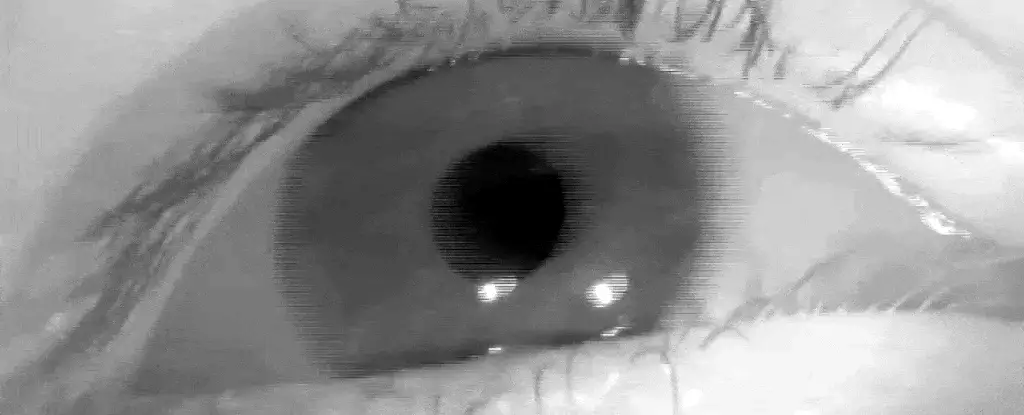The landscape of Alzheimer’s disease diagnosis is undergoing a remarkable transformation, with a pioneering study exploring the use of in-ear microphones to detect subtle eye movements as an early indicator of this devastating condition. At the core of this innovative approach is the phenomenon known as saccades, which are rapid eye movements that are crucial for visual perception. The utility of monitoring these movements could herald a new era in non-invasive and accessible diagnostic methods for a disease that affects millions globally.
Alzheimer’s disease often manifests in slight but significant changes in eye movement, specifically a delay in saccadic response. Identifying these alterations early in the disease process could facilitate prompt interventions, potentially slowing disease progression. Traditional eye-tracking systems designed to capture these movements typically require extensive apparatuses, which are not always feasible in clinical settings. Thus, researchers at École de Technologie Supérieure in Canada, led by electrical engineer Rachel Bouserhal and neuroscientist Chris Niemczak from Dartmouth College, are exploring the use of hearable technology to overcome these limitations.
Saccades are defined as the quick, simultaneous movements of both eyes in the same direction, allowing individuals to scan their environment and focus on specific elements of interest. This rapid motor activity demands precision, reflecting both the integrity of motor control and cognitive functioning. As observed in typical activities like reading or during the REM sleep cycle, saccades occur with remarkable swiftness and coordination. However, for patients developing Alzheimer’s, these movements begin to slow down and become less coordinated early in the progression of the disease.
Research suggests that monitoring saccadic latency – the time taken for the eyes to reposition to a new target – can serve as a crucial early diagnostic marker for Alzheimer’s. This approach is not only innovative but also offers an enticing prospect: a method that is both inexpensive and easy to access, irrespective of a person’s literacy level. This could usher in a profound change in how we detect and monitor brain health.
Harnessing Hearing Technology in Healthcare
To tackle the challenges associated with conventional eye-tracking systems, the research team has turned to ‘hearables’—sophisticated earpieces equipped with in-ear microphones designed to capture physiological signals. The parameters are simple yet revolutionary: these microdevices can pick up vibrations generated by eye movements, a phenomenon largely invisible to the human ear due to the brain’s filtering capabilities. In extreme cases, individuals with superior canal dehiscence syndrome report an ability to hear their own eye movements, highlighting the potential for specialized technology to make those otherwise imperceptible signals detectable.
The ambitious plan involves equipping 35 Alzheimer’s patients, alongside an equal number of healthy controls, with both the hearable technology and standard eye-tracking devices. This dual approach will validate whether the data from the hearables can provide sufficient information to develop effective diagnostic algorithms. The ultimate goal is a wearable device capable of continuous health monitoring that could not only detect Alzheimer’s earlier but also track its progression over time.
What makes this research particularly compelling is its potential applicability beyond Alzheimer’s disease itself. The insights gained from monitoring saccadic latency could extend to diagnosing other neurological conditions as well. As electrical engineer Arian Shamei noted, while the current focus is on Alzheimer’s, the capability to differentiate between various diseases based on in-ear signals opens an exciting frontier in diagnostics.
The vision is clear: to refine these technological tools to enhance their functionality and introduce new health monitoring algorithms. This would not only offer a realistic solution for early diagnosis but could also transform how we comprehend various neurological disorders, making it easier to address them as they arise.
The ongoing research into using hearable technology for diagnosing Alzheimer’s disease reveals a promising intersection of engineering and medicine. By tapping into the body’s subtle signals, this innovative approach could significantly alter the landscape of Alzheimer’s detection, ensuring that timely interventions become the norm rather than the exception. The implications of this research are vast, potentially leading to a future where early detection transforms outcomes for countless individuals grappling with neurological diseases. Thus, as this groundbreaking study continues to unfold, it holds the power not only to advance science but to profoundly impact human health and well-being.


Leave a Reply